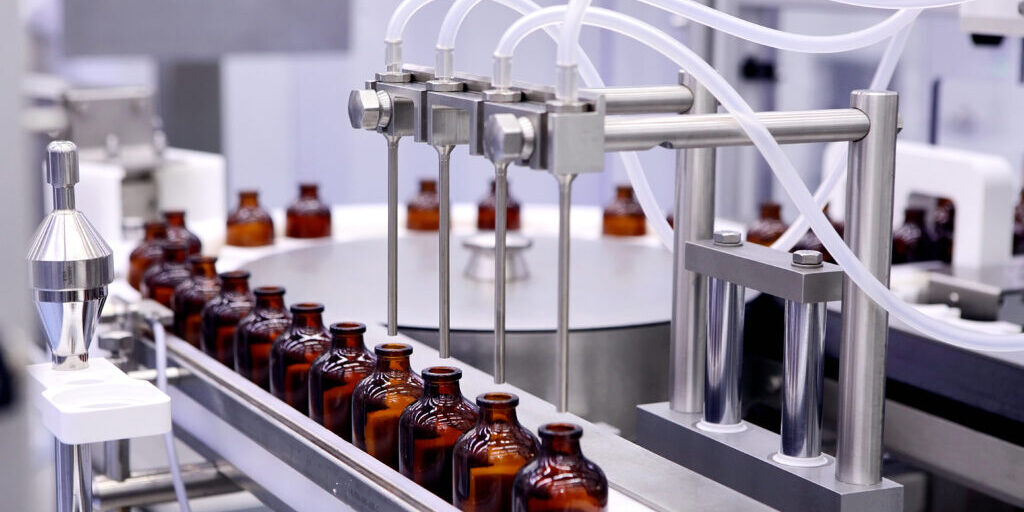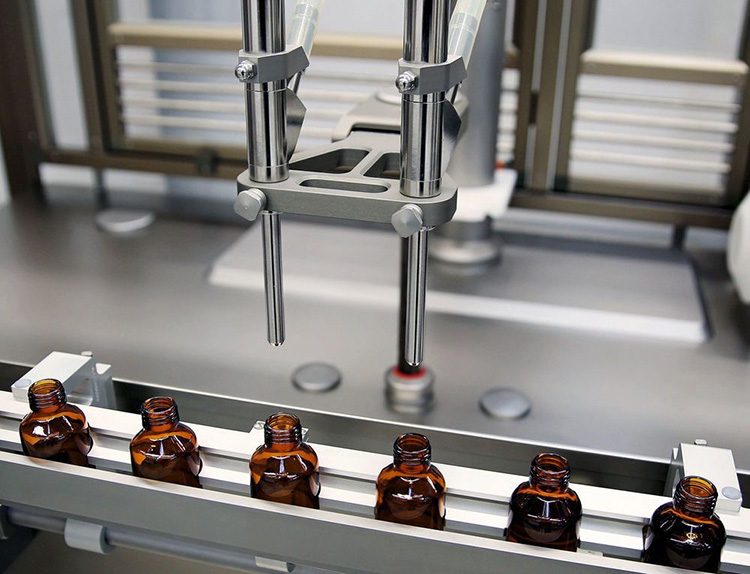Introduction: Why Maintenance Matters
Vial filling machines do need maintenance! In the pharmaceutical industry, aseptic filling machines are strong industrial machines. They are the core of pharmaceutical production. Their complex parts need regular care to work well. If you do not do preventive maintenance, these expensive systems develop problems fast. These problems disrupt work and lower product quality. Regular upkeep stops costly breakdowns. It also ensures you follow rules. It makes equipment last much longer. The difference between a well-maintained machine and a neglected one often determines whether production runs smoothly or faces unexpected shutdowns. Smart maintenance protects your investment. It keeps the precision and cleanliness needed in pharmaceutical manufacturing.
Pharmaceutical manufacturers must learn these maintenance steps to prevent problems. This is very important. So, make a checklist. This helps create a good maintenance routine. It keeps production of pharmaceutical products running smoothly. Let’s start with some maintenance tips.
Routine Cleaning and Sterilization
Cleaning Aseptic Vial Filling Equipment
Aseptic vial filling machines require specialized cleaning to maintain sterile conditions. Remove all product residues and broken vials using stainless steel trays. Take apart parts like nozzles, valves, internal pipes, and seals. Follow the instructions from the manufacturer. Use hydrogen peroxide solutions to kill microorganisms well. Use isopropyl alcohol to clean surfaces. Clean each part with Water for Injection followed by thorough rinsing to remove all residues. Run cleaning cycles through filling lines and valves to reach all surfaces. Sterilize parts using an autoclave at the right temperature. Or use approved chemical sterilants.

Avoiding Contamination in Pharmaceutical Vial Lines
Regulations require proper maintenance of aseptic filling machines in clean room environments. This stops contamination during drug production. Careful planning is needed for equipment maintenance in sterile areas. This helps reduce disruption to controlled environmental conditions. When cleaning prevent contamination by maintaining strict separation between clean and dirty areas using pass boxes. Transfer components in designated stainless steel trolleys to washing areas. Clean machine base, star wheels, and guides with disinfectant solutions applied through lint-free dusters. Pay attention to seals, valves, and nozzles as these areas collect contaminants easily. Test rinse water samples for chemical residues and particulate matter before approving equipment for use. Keep electrical cables and sensors away from cleaning solutions to prevent damage.
Regular Mechanical Checks
Inspecting Pumps, Valves, and Sealing Components
- Check hydraulic pumps for unusual noise, vibration, or overheating that signals potential failure.
- Inspect pump seals and mounting bolts for tightness to prevent pressure loss.
- Test pressure gauges regularly to ensure accurate readings and replace faulty ones immediately.
- Examine hydraulic fluids for proper levels and contamination. Verify pneumatic systems maintain consistent pressure and check air filters.
- Inspect all sealing components including O-rings and gaskets for wear or damage.
- Test valve operation for smooth opening and closing cycles. Monitor pressure sensors for accurate feedback to control systems.
Lubrication and Wear Prevention
Proper lubrication is key to stopping wear in vial filling machines. It helps machines last longer and work reliably. Without adequate lubrication, moving parts experience increased friction that leads to premature wear, costly breakdowns, and unexpected production downtime. Here are some measures:
- Apply manufacturer-approved lubricants to ball screws, linear rails, and moving parts according to scheduled intervals to prevent friction-related damage and maintain smooth operation in pharmaceutical environments.
- Check bearings, chains, gears, and sprockets for proper lubrication to prevent premature wear while ensuring food-grade lubricants are used in product contact areas.
- Monitor conveyor systems and motor shafts for adequate lubrication and inspect for signs of overheating or unusual noise that indicates insufficient lubrication.

- Inspect bearing housings for cracks and replace worn bearings immediately to prevent catastrophic failure and damage to connected components during production runs.
- Clean linear guides before applying lubricants to prevent contamination using lint-free cloths and approved solvents to ensure optimal lubricant performance and longevity.
- Replace timing belts, conveyor belts, and other wear components per manufacturer recommendations to prevent unexpected breakdowns and maintain consistent production schedules in sterile manufacturing environments.
Document all lubrication activities to maintain compliance with industry standards.
Electrical and Control System Maintenance
Checking PLCs and Touchscreen Controls
Test PLC systems regularly to ensure proper program execution and memory function. Check all input and output modules for correct signal processing. Inspect touchscreen interfaces for responsiveness and display clarity. Check performance metrics from the digital controls. Verify backup battery status in control systems and replace when needed. Clean touchscreens with approved cleaners to maintain visibility. Test emergency stop functions and safety interlocks for proper operation. Update software according to manufacturer recommendations to fix bugs and improve performance.
Ensuring Proper Sensor and Actuator Functionality
Calibrate position sensors and level detectors to maintain filling accuracy. Test proximity sensors for consistent detection ranges. Check actuator response times and movement precision. Inspect sensor wiring for damage or loose connections. Verify temperature and pressure sensor readings against calibrated standards. Clean optical sensors to remove dust or product residue that affects performance. Replace sensors showing drift or inconsistent readings to prevent production errors. Test actuator air supply pressures and electrical connections for reliable operation.
Troubleshooting Common Issues
Addressing Inaccurate Filling Volumes
Inaccurate aseptic filling is the most common problem in vial filling machines. Check calibration settings first to ensure proper pump speed and fill volume parameters. Inspect filling valves for leaks or blockages that prevent correct liquid dispensing and aseptic processing. Test peristaltic pumps for erratic flow and clean pump tubing regularly. Verify air pressure in pneumatic systems remains stable as fluctuations affect accuracy and pressure filling. Remove air bubbles from filling lines by bleeding the system properly. Replace worn valve cores and speed throttle valves when filling accuracy declines. Check for foreign objects or buildup inside nozzles that can block liquid flow for sterile filling standards. Calibrate the system regularly to keep performance steady. Write down all adjustments.
Solving Capping or Sealing Problems
Capping issues often result from improper stopper insertion or loose cap placement. Inspect the filling and capping mechanism for correct settings and alignment. Check stopper feeding system to ensure consistent stopper placement. Verify cap torque settings meet specifications for proper sealing. Examine conveyor alignment to prevent vials from tilting during capping. Replace worn capping heads and sealing components when they show damage. Test emergency stops and safety interlocks to ensure proper operation. Adjust capping pressure according to vial and cap specifications. Monitor stoppering system for consistent insertion depth and verify seal integrity.
Scheduled Preventive Maintenance

Maintenance Intervals and Checklists
- Daily maintenance: Establish daily maintenance tasks including cleaning, lubrication checks, and visual inspections of key components.
- Weekly inspection: Perform weekly deep cleaning of all product contact parts and calibration verification. Schedule monthly comprehensive inspections of electrical systems, sensors, and mechanical components.
- Quarterly overhauls: Conduct quarterly overhauls of pumps, valves, and hydraulic systems. Plan annual major maintenance including complete disassembly and part replacement.
Create detailed checklists for each maintenance level covering all critical components. Maintain detailed maintenance records. Track wear part replacement schedules and inventory management to prevent unexpected failures. Make maintenance schedules based on operating hours. Think about production schedules. Also, follow the manufacturer’s advice. Implement digital maintenance log systems for easy access, updates, and historical tracking.
Documentation and GMP Compliance

cGMP manufacturing rules require detailed records of all maintenance work done on pharmaceutical equipment. Keep detailed maintenance records. Include dates, operators, and verification signatures. This helps meet regulatory rules. Record all cleaning tasks. Include proof that cleaning worked well. Record calibration data and deviation reports according to GMP requirements. Keep records of spare parts inventory. Also keep documents that show suppliers are qualified. Keep equipment history files. Use them for trend analysis and regulatory inspections. Create standard operating procedures for all maintenance activities. Personnel involved in the aseptic filling process require specialized training and must wear sterile protective clothing. Create procedures to control changes when modifying equipment. Record how well preventive maintenance works using performance data.
Spare Parts and Supplier Support
Managing spare parts well is important to keep Pharmaceutical Filling Machines running without stops. It also prevents costly machine downtime. Having spare parts ready allows quick repairs when parts break. This reduces unexpected downtime. Manufacturers in biotech industries, drug production and other bio-pharmaceutical companies lose billions each year because of downtime. Proper inventory helps companies follow rules. It keeps product quality high. It also stops emergency buying costs. This helps build better client relationships by delivering on time. For this you need a reliable manufacturer who has spare part availability.
Choosing Reliable Vial Filling Machine Manufacturers
- Select manufacturers with proven track records in pharmaceutical equipment with small cleanroom footprint and strong regulatory compliance.
- Evaluate technical support capabilities including remote diagnostics and on-site service availability.
- Review manufacturer certifications and quality management system compliance. Assess training programs offered for operators and maintenance personnel.
- Consider manufacturers with global presence for consistent support across multiple facilities.
- Verify availability of comprehensive documentation including operation manuals and spare parts catalogs.
- Check customer references and case studies from similar pharmaceutical applications.
- Ensure manufacturers provide validation support and regulatory documentation.
Availability of Replacement Parts
Make agreements with manufacturers to guarantee spare parts are available during the equipment’s life. Maintain critical spare parts inventory based on recommended manufacturer lists. Identify alternative suppliers for standard components to reduce supply risks. Create emergency spare part list for urgent part requirements. Monitor parts obsolescence schedules and plan upgrades accordingly. Negotiate service level agreements for parts delivery timeframes. Keep detailed parts information and cross-reference data. Make connections with authorized distributors. This allows faster local support. Document all parts usage for inventory planning and cost analysis.
Conclusion: Maximizing Efficiency and Machine Lifespan
Proper maintenance turns vial aseptic filling machines from costly problems into reliable tools. These tools produce pharmaceutical and medicinal products like cell and gene therapies. Strategic cleaning plans, regular mechanical checks of filling lines, loading trays, inspection systems, and closing machines is critical. It help in maintaining sterile environment for liquid vial processing and biosimilar processing. Also, managing spare parts ahead of time keep machines working well for decades. These actions also meet rules and save bio-pharmaceutical companies and large pharmaceutical manufacturers save million of dollars. Contact King Pack Filling Machine today for expert maintenance solutions that maximize your equipment investment and production efficiency. Not just we offer high-quality equipment but also provide premium after sales technical support. For more information and queries, contact us now!




